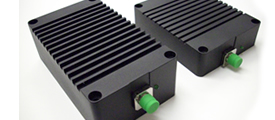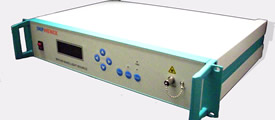
Certainly, sensing has become one of the most interesting and essential streams for optical devices. Considering its widespread applications in clinical and other areas, more and more companies and individuals are coming forward to research and develop new technologies in this sector.
This blog discusses the broadband light source (BLS) modules, which are also known as SLD light sources, the light source set, and their characteristics. Let us begin with the definition.
A broadband light source is a device that is used for multi-wavelength tests and measurements of wavelength-division-multiplexing components. These light sources use the amplified spontaneous emission of diode-pumped, erbium-doped fibers.
Most of the superluminescent diode light source sets consist of two types of equipment, namely,

It is a speckle-free laser that emits low-coherence light with a broadband spectrum like LED (Light Emission Diode) and high brightness like LD (Laser Diode). However, considering its high dependency on temperature, most of the SLD modules are stabilized.

The emission of light in superluminescent diodes works on the same principle as the LD (Laser Diode) and LED (Light Emission Diode). The emission of light takes place by flowing forward current to the p-n junction. The electrons enter from the n-side and holes from the p-side when the power supply is connected.
Broadband light sources have widespread applications in various industries. However, the primary applications of these benchtop instruments are:
With the full-fledged R & D in place by various research centers and companies, we could expect many more SLD light source applications soon.
Inphenix is a renowned photonic company that manufactures bright light sources, laser diodes, SWEPT lasers, and other products used in the clinical, telecom, sensing, and measurement industry. With industry experts and highly advanced technology on the side, the company manufactures & supplies a wide range of customizable broadband light sources that can be configured with SLDs as per need.
Our broadband light sources are adorned with very short coherence length and high optical output power. Other than readymade superluminescent diodes and control units, the company also offers standard light sources that comprise powerful single or multiple SLDs that you can use for extended spectral bandwidth.
